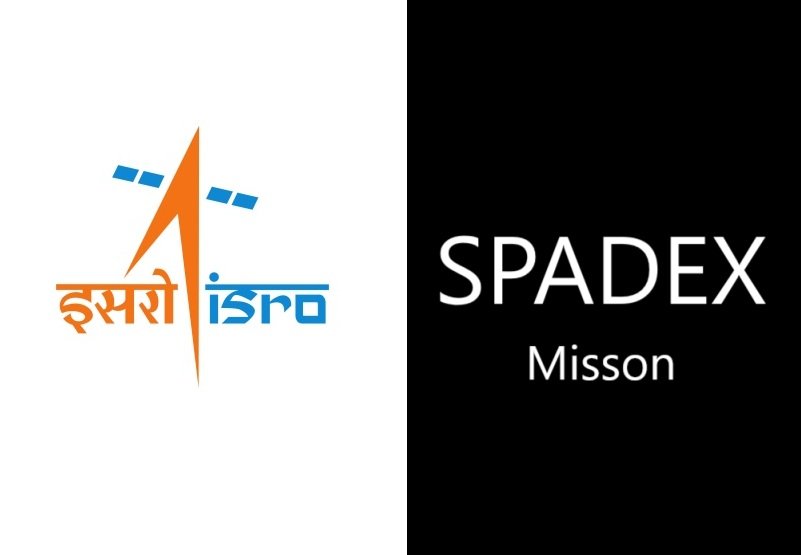India’s SpaDeX Mission: A Historic Milestone in Space Exploration
On January 16, 2025, the Indian Space Research Organisation (ISRO) achieved a groundbreaking milestone by successfully completing its Space Docking Experiment (SpaDeX). This mission demonstrated India’s capability to perform in-orbit docking of spacecraft, a feat that places the nation among a select group of countries with advanced space technology. The successful docking marks a pivotal moment in India’s space exploration journey, opening new avenues for satellite servicing, space station development, and interplanetary missions.
Congratulations to our scientists at ISRO and the entire space fraternity for the successful demonstration of space docking of satellites. It is a significant stepping stone for India’s ambitious space missions in the years to come.
-Shri Narendra Modi, Prime Minister of India
India docked its name in space history! … ISRO’s SpaDeX mission accomplishes historic docking
success. Proud to witness this moment!-ISRO
Overview of the SpaDeX Mission
The SpaDeX mission involved two indigenous satellites, named SDX01 (Chaser) and SDX02 (Target). Each satellite weighed approximately 220 kilograms. The mission’s primary objective was to validate and demonstrate the complex procedures and technologies required for in-space docking.
The satellites were launched into orbit on December 30, 2024, aboard ISRO’s trusted Polar Satellite Launch Vehicle (PSLV-C60). The PSLV placed the satellites into slightly different orbits, setting the stage for the critical docking operation. Over the subsequent weeks, ISRO engineers meticulously monitored and controlled the satellites, ensuring precise alignment and synchronization for the docking attempt.
Technological Achievements
The SpaDeX mission involved several cutting-edge technologies and processes, including:
- Autonomous Navigation Systems: Both SDX01 and SDX02 were equipped with advanced sensors, cameras, and software to facilitate real-time positioning and orientation adjustments. These systems enabled the Chaser satellite to autonomously locate and approach the Target satellite.
- Robust Guidance and Control Algorithms: The mission utilized sophisticated algorithms to calculate trajectories, avoid collisions, and ensure the docking procedure’s precision.
- Docking Mechanism: A custom-designed docking interface, known as the indigenous ‘Bharatiya Docking System,’ ensured a secure and reliable connection between the two satellites. This system was entirely developed in India, incorporating unique innovations tailored to ISRO’s mission requirements. It accounted for factors such as relative velocity, alignment accuracy, and structural integrity while ensuring seamless integration between the spacecraft.
- Redundancy and Fail-Safe Systems: To mitigate risks, ISRO incorporated multiple layers of redundancy, including backup sensors and contingency plans for unexpected anomalies.
The Docking Process
The docking operation began with SDX01 initiating a series of maneuvers to match the orbit and velocity of SDX02. Using a combination of autonomous navigation and ground-based guidance, SDX01 gradually approached SDX02 over several hours. The process involved the following steps:
- Proximity Operations: SDX01 closed the distance to SDX02 using incremental thrusts while maintaining precise orientation.
- Alignment and Capture: Once within a few meters, the Chaser aligned its docking interface with the Target and initiated the final approach. Sensors and cameras ensured millimeter-level accuracy.
- Secure Docking: The docking mechanism engaged, creating a rigid connection between the two satellites. Confirmation of the successful docking was received at ISRO’s mission control in Bengaluru.
Significance of the Achievement
The successful execution of SpaDeX is a testament to India’s growing capabilities in space technology. Key implications include:
- Satellite Servicing: In-orbit docking paves the way for extending the lifespan of satellites through refueling, repairs, and upgrades.
- Space Station Development: The technology is a cornerstone for building modular space stations and conducting long-duration space missions.
- Interplanetary Missions: Docking capabilities are essential for assembling spacecraft for deep-space exploration, including potential human missions to the Moon and Mars.
- International Collaboration: The success of SpaDeX positions India as a valuable partner for global space initiatives involving docking and related technologies.
Global Context
India now joins an elite group of nations—the United States, Russia, and China—that have demonstrated in-space docking capabilities. Each of these countries has leveraged this technology for ambitious projects such as space stations, lunar missions, and satellite maintenance. With SpaDeX, ISRO has showcased its readiness to contribute to and lead advanced space missions on a global scale.
Future Prospects
The SpaDeX mission is expected to serve as a foundation for several upcoming initiatives. Potential projects include:
- Gaganyaan Support: Developing docking systems for crewed missions under India’s Gaganyaan program.
- Space Debris Management: Using docking techniques to capture and deorbit defunct satellites.
- Collaborative Space Stations: Partnering with other space agencies to develop and operate international space stations.
Conclusion
The SpaDeX mission represents a defining moment for ISRO and India’s space program. By mastering the complexities of in-orbit docking, ISRO has reaffirmed its position as a global leader in space technology. This achievement not only strengthens India’s technological capabilities but also inspires confidence in its ability to undertake more ambitious missions in the future. As the nation celebrates this historic success, it also looks forward to the exciting possibilities that lie ahead in the realm of space exploration.
‘India appears to have become master in docking technology,’ says Scientist Nambi Narayanan
Read more At:
https://www.aninews.in/news/national/general-news/india-appears-to-have-become-master-in-docking-technology-says-scientist-nambi-narayanan20250116132722/
Reference: https://static.pib.gov.in/WriteReadData/specificdocs/documents/2025/jan/doc2025116486201.pdf






